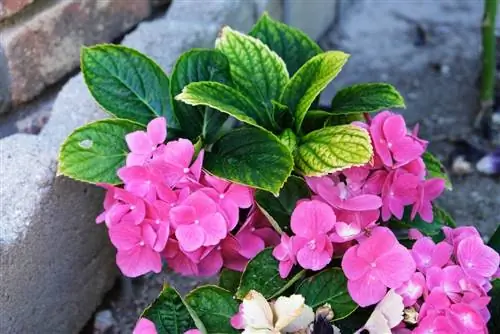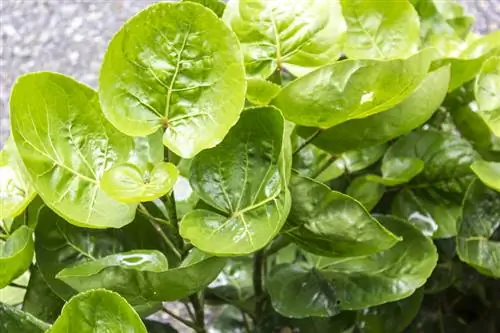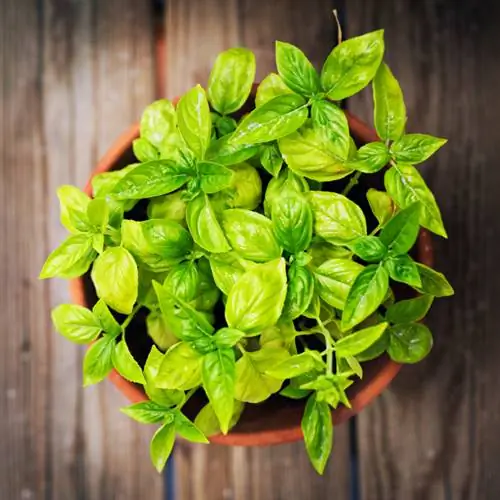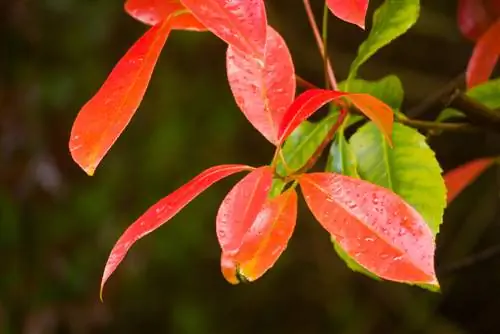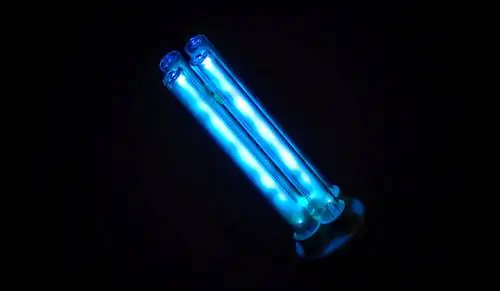- Author admin [email protected].
- Public 2023-12-16 16:46.
- Last modified 2025-06-01 06:02.
Light green leaves on hydrangeas are no trivial matter. The leaf discoloration indicates two different deficiency symptoms. The type of discoloration confirms the actual cause and results in adequate countermeasures. This is what to do when your hydrangeas have light green leaves.

What to do if the leaves on hydrangeas are light green?
Light green leaves on hydrangeas can indicate iron deficiency (leaf chlorosis) or nitrogen deficiency. To combat it, you can move the plant to acidic soil, lower the pH, water with rainwater or use a nitrogen fertilizer, depending on the cause.
My hydrangeas have light green leaves - what should I do?
Light green leaves on hydrangeas (Hydrangea) are an unmistakable symptom ofserious growth problems Without countermeasures, the process progresses inexorably. Within a short time, the leaves turn yellow, dry out and fall off prematurely. Two triggers are responsible for the damage. A root cause analysis is the first step. The diagnosis is closely related to the type of discoloration:
- Light green to yellow leaves with green leaf veins: leaf chlorosis due to iron deficiency.
- Completely light green or yellow leaves: nitrogen deficiency due to too sparing fertilization or nitrogen-depleting mulch layer.
How do I combat leaf chlorosis on hydrangeas?
Leaf chlorosis is the result of a chain reaction. Hydrangeas rely on soil with an acidic pH between 4.0 and 6.0 for he althy growth. Excess limestone in the soil lays down iron. Due to the resulting iron deficiency, the leaves turn light green. This is what you need to do now:
- Option 1: Transplant the hydrangea outdoors in low-lime, humus-rich soil; Repot the pot hydrangea in acidic rhododendron soil.
- Option 2: Lower the pH value in the soil by adding aluminum sulfate (€13.00 at Amazon) (alum) or Epsom s alt.
- Future: Water hydrangeas with rainwater.
What helps with light green leaves due to nitrogen deficiency?
The most common cause of nitrogen deficiency in hydrangeas is a layer of mulch made from peeled tree bark. Fresh bark mulch in particular uses the nitrogen reserves in the soil for its decomposition process. Ideally, you should fertilize the starving hydrangea with afast-acting nitrogen fertilizer These turbo fertilizers have proven themselves:
- Sprinkle urea fertilizer onto the root disc according to the manufacturer's instructions and water again.
- Foliar fertilization: Dilute nettle manure with rainwater in a ratio of 1:50 and spray repeatedly on the hydrangea foliage.
- Future: Mulch hydrangeas with leaves, dried grass clippings, acidic needle or bark compost.
Tip
Suffering Rhododendron
Because rhododendrons and hydrangeas complement each other wonderfully, the flowering bushes often thrive side by side. The first victims of leaf chlorosis or nitrogen deficiency are the flexible hydrangea leaves. After a delay of several weeks, the leathery rhododendron leaves also react and turn light green. By including rhododendron in the recommended control measures right from the start, the alpine rose is spared from serious consequences.

